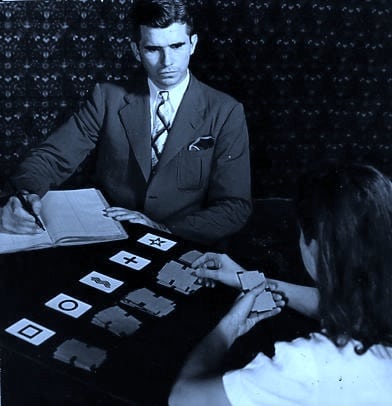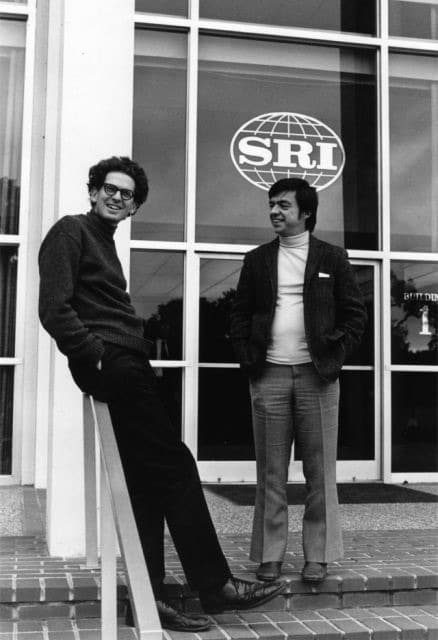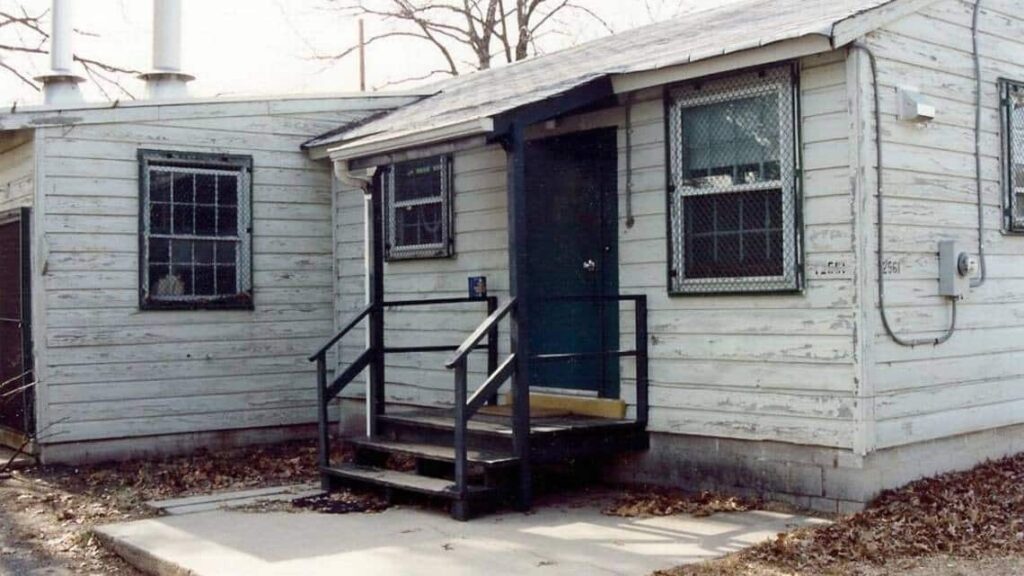The History of Remote Viewing

Photo by Rhine Research Center
Remote viewing (RV) did not spring into existence overnight. Its earliest ancestors can be traced back thousands of years to the days of the early Greeks and beyond. But RV’s most direct precursors date from the 1930’s, beginning with experiments in clairvoyance under conscientious scientists like J.B. Rhine. Research into telepathy and “thought transference” by notables such as Upton Sinclair (described in his book Mental Radio) and Rene Warcollier (Mind to Mind), together with investigations into out-of-body states contributed further to developments that would eventually produce remote viewing.
In the late 1960s and early 1970s, out-of-body experiments were conducted in New York City by researchers at the American Society for Psychical Research. One of the subjects of these experiments was Ingo Swann, an artist and student of the paranormal who had come to New York years before from Colorado. Tiring of the standard research protocols, Swann suggested a number of changes in and improvements to the experiments, which among other things led to a successful series of attempts to mentally describe the current weather in various cities around the US. After Ingo’s descriptions, the weather conditions in these cities were verified by a phone call to a weather station or other reliable authority.

Photo by SRI
These experiments suggested to others that something unusual to current understanding was involved by the “remotely viewed” locations and objects otherwise inaccessible to direct human perception. The results were provocative and underscored the value of further research.
In 1972 Hal Puthoff, Ph.D., a physicist at SRI-International, a California-based research institute that had been spun off from Stanford University, expressed his interest to a researcher in New York in conducting research into a form of non-conventional communications. The New York researcher was an acquaintance of Swann’s, which fact eventually led to Swann and Puthoff getting together to conduct an experiment that ultimately attracted attention and funding from the Central Intelligence Agency. Research physicist Russell Targ soon joined Swann and Puthoff at SRI, forming the core of a team that researched and refined understanding of what had now become known as “remote viewing.” For the next two decades most remote viewing research was funded by the government and performed in secret. But a few less-secretive sources also provided support, and a limited amount of non-classified information about RV was published.
In the mid-’70s government support for the growing RV program moved from the CIA to the Defense Intelligence Agency, as well as certain other military organizations. Subsequent experiments and research explored the edges of what remote reviewing could do and tried to improve quality and consistency of the results.

Photo by Edwin May
In 1978 the US Army created a unit to use RV operationally in collecting intelligence against foreign adversaries. This program continued under Army sponsorship until 1986, when the operational and research arms of the government remote viewing program were combined under the leadership of DIA. In about 1991 DIA renamed the program “Star Gate.”
By this time, the research part of the program had itself been transferred from SRI to Science Applications International Corporation (SAIC), and was directed by Dr. Edwin May, who had replaced Hal Puthoff in 1985 when Puthoff moved to assume directorship of the Institute of Advanced Studies in Austin, TX.

Photo by Dr. Elmar R. Gruber
Concurrent with the government RV program, civilian researchers were exploring phenomena related to remote viewing. Some of these were replications of SRI’s experiments, while others followed complementary avenues of research. Most prominent of the latter were Charles Honorton’s “Ganzfeld” techniques, and the “remote perception” experiments conducted at the Princeton Engineering Anomalies Research laboratory. Civilian applications were being explored as well.
In 1995, an act of Congress transferred responsibility for the Star Gate program from DIA back to CIA. That fall, the CIA declassified portions of the program and released a controversial research report purporting to show that remote viewing was not useful as an intelligence collection tool. By the time this document was released, the CIA had already terminated the remote viewing program.
In the years since the 1995 closure of the government program, a number of persons previously associated with it have gone public by publishing books, giving media interviews, and/or offering training commercially in remote viewing methodology.
